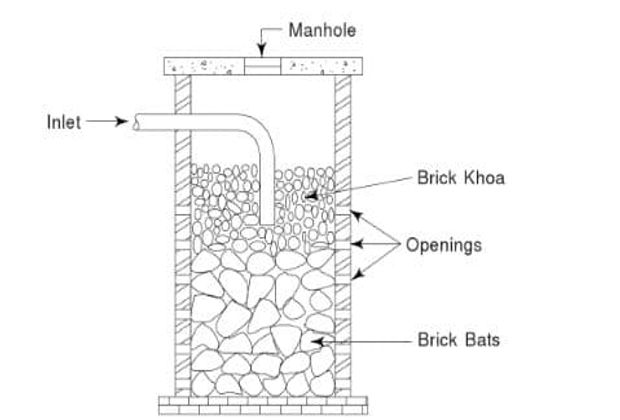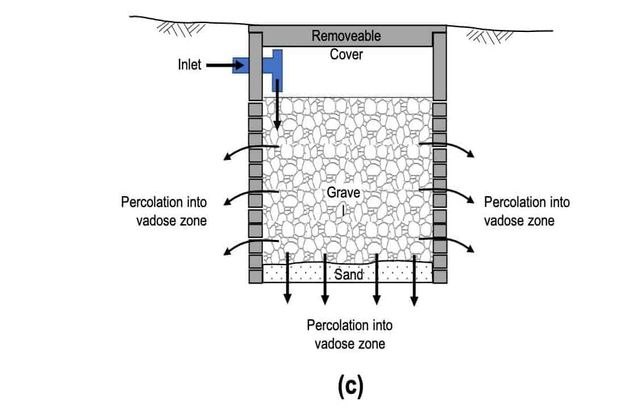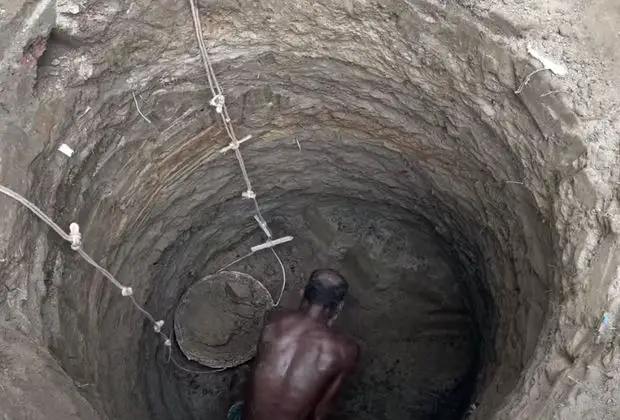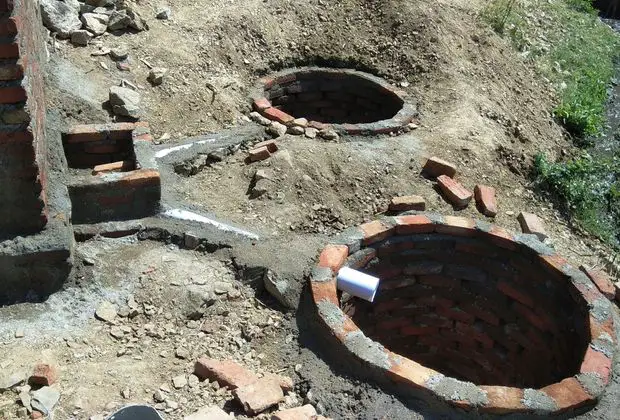What is a Soak Pit?
A soak pit is an underground structure that helps in disposing of wastewater or Excess water, commonly stormwater into the ground. It is also known as soakaway in Uk and soak well in Australia.
Soak pits are closed porous rectangular or circular chambers that are directly connected to the primary treatment unit of a residential or commercial building. The main function of a soak pit is to slowly soak the wastewater coming from the septic tank into the ground. This technique is commonly used for discharging wastewater and it also helps in recharging groundwater bodies. The surrounding soil must have a high water absorption capacity so the water can percolate easily.
Soak Pit Meaning
Soak pit meaning – It is a rectangular or circular underground porous chamber that allows the wastewater coming from the septic tank to drain off/slowly soak into the ground. Which is also known as a soakaway or soak well.
Also Read – What is Sewerage? Different Types of Sewage system
How Does the Soak Pit Function?

The effluent discharged from the primary treatment unit or washroom/latrine, which is usually known as greywater is received by the soak pit. Then it allows the effluent to gradually percolate into the surrounding soil.
The organic materials present in the effluent are digested by microorganisms and small particles in the effluent are filtered out by soil matrix, while the water is percolated or infiltrated into the surrounding soil. Surrounding soil must have a high absorption rate to soak the wastewater to avoid rapid saturation.
Why Soak pit Construction is necessary?
The effluent discharged from the primary treatment unit(such as septic tank, biogas settler, anaerobic baffled reactor, etc) of a residential or commercial building is not pure might contain toxic particles, So it cannot be directly discharged into the environment.
Discharging of untreated effluent creates an unhygienic, foul odor environment and the chance of inviting many diseases. So in order to prevent these, the effluent must be treated to a certain degree then released into the ground. So it is necessary for a soak pit construction that helps in the treatment process of discharged effluent and it also helps in recharging the groundwater table.
Also Read – What is Grit Chamber? Types of Grit chambers
Soak Pit Design
The soak pit design must meet the following condition as mentioned below.

Soak Pit Design consideration /Soakaway drainage design
The immersion well(effluent collecting pit)capacity is usually considered 1m3 and the depth of the pit should be between 1.5 m to 4 m deep.
Soak pit bottom should never be less than 2 m above the groundwater table.
It is either lined with porous material or left empty to prevent wall collapse and provide support.
It must be constructed away from the high traffic areas, to avoid soil compaction and it should be located away (30 m) from a drinking source.
A layer of sand and fine gravel are spread at the bottom of the soak pit to help disperse the flow.
Soak pit design must consider providing a removable lid at the top for any future maintenance work.
Priority must be given to wastewater from the primary treatment unit, which should ensure stormwater is not gathered in the pit resulting in clogging of the pit.
Soak Pit Construction / How to build a soakaway
Soak pit construction procedure
1. First, decide the size of the pit as per your requirements, usually, the size with (1 x 1 x 1.2) m3 is suitable for a family with 4-5 members, which has the capacity to carry 300 per lit discharge in the day.
2. Now excavate the pit of the required size, manual excavation is preferred as it is economical.

3. Now you can place the precast circular blocks or construct them using brick masonry. Usually, bricks are laid in such a way there is an adequate gap between them as shown in the image.

4. Connect the effluent carrying pipe to the soak pit, the distance between the pipe and cover lid must be minimal.

5. Now fill the pit with brickbats and boulders or gravels.

6. Cover the pit and make sure it is removable for future maintenance.

Also Read – What is screening in water treatment? | Types of Screens
Advantages
Some advantages on why one must consider soak pit for discharging wastewater.
Soak pit construction can be done using locally available materials.
It also helps in recharging groundwater bodies.
Installation of the soak pit requires a small area.
This technique can be used in a rural or suburban area where a proper drainage system is not available.
Construction is very cost-effective and can be adopted by anyone.
Disadvantages
Some disadvantages of soak pit are as follows:
Primary treatment is required in order to prevent clogging
This technique is not suitable for cold climate countries/areas.
It is not suitable if the daily effluent discharge is in high volume.
The soak pit technique is not suitable if the absorption rate of the soil is not good enough.
It may negatively affect the soil and groundwater properties, if it is built too near to the groundwater table or the discharged effluent is highly toxic.
Also Read – Activated Sludge Process -Types| Components |Advantages |Description

